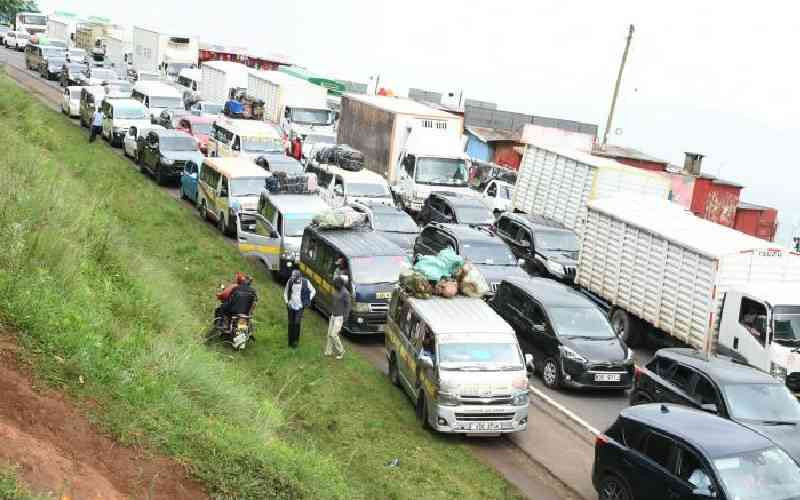When the full story of Covid-19 is written, a chapter will be dedicated to how the pandemic saw teenage pregnancy numbers rise.
Immediately lockdown was announced in Kenya, the civil society warned of a groundswell in teenage pregnancy numbers.
Indeed, there was a reason to be worried. Data exclusively obtained by The Standard from three counties shows detectable increases in the number of girls aged 10 to 19 presenting at health facilities with pregnancy.
Between May and September 2020 in Narok County, there were more young girls visiting health facilities with pregnancy than in 2019.
In 2019, 5,394 visits to health facilities, by adolescents who were pregnant, were registered between May and September. For 2020, the number for the same period is 7,382.
“This year, since May the number of adolescent pregnancies has been higher than last year,” says Dr Francis Kiio, the county director of health in Narok.
Dr Kiio has no doubt in his mind that the lockdown measures meant to curb spread of the novel coronavirs is to blame for the surge in numbers.
In Busia County, compared to Narok, the change has not been as big. Noticeable differences were captured only for the months of August and September.
In August and September 2019, Busia recorded 423 and 408 adolescents visiting health facilities with pregnancy, respectively.
In August and September 2020, the numbers recorded were 514 and 497 respectively.
Recent data collected by International Rescue Committee (IRC) showed that girls living in refugee camps have been uniquely affected.
In June 2019 Kakuma refugee camp in Turkana recorded eight cases of teenage pregnancy. In June 2020 the camp recorded 62 pregnancies.
In Dadaab refugee camp, the IRC report shows a 28 per cent increase in reported teenage pregnancies between April and June 2020, compared to the same period last year.
So, yes: more young girls have fallen victim to teenage pregnancy in 2020 compared to the previous year.
One such victim is Naserian* – a form two student at Tembwo Girls, a boarding secondary school in Bomet County. “Corona came and we were told to go home,” she says.
Stay informed. Subscribe to our newsletter
Back in a village in Narok Naserian met a boy with whom she attended Nchurra Yeobori primary school.
“We became friends in April and started having sex,” Naserian, now aged 15, says. That month she missed her periods but was not immediately alarmed.
In May, she missed again. By then, morning sickness was kicking in. “That’s when I knew I was pregnant,” she says.
Margaret Mpatiany, a family friend of Naserian, is heartbroken at the increase in teenage pregnancies in Narok County.
“It’s like when students were asked to stay home to avoid coronavirus they took it as cue to get pregnant,” Mpatiany says. “Girls are now popping up everywhere in Narok with pregnancy: it is disheartening.”
This pregnancy, Mpatiany says, has placed Naserian in a precarious position as the girl is an orphan and her uncle – who, together with his wife, had taken the place of her parents – is disappointed in her and is not keen on her going back to school.
“I am learning my lesson the hard way. The boy responsible for this pregnancy has run away; we no longer see him.
“My prayer is that I will go back to school, clear high school, go to university, study medicine and live a fulfilling life,” Naserian says.
Odds against her
For the moment, the odds are against her. The Kenya Demographics and Health Survey (KDHS) 2014 found that at least 13,000 teenage girls drop out of school annually because of pregnancy. Teenage pregnancy is not new. “It was a scourge that was largely driven by cultural practices like FGM and early marriage that were disadvantageous to young girls,” says Angeline Siparo, the Country Director of Population Reference Bureau.
“Covid-19 lockdown measure forced girls to be home for prolonged period of time – a place where they are vulnerable and are easily taken advantage of,” Siparo says.
Roselyn Kigen, founder of International Parenting for a better Life, says teenage pregnancy could be evidence of rape, incest, coerced sex or simply a sexually active teenager.
There are many instigators of teenage pregnancy, she says. “Some prominent ones include bad parenting, young people lacking the right information on sex and sexuality, domestic abuse (incest), exposure to criminal abuse (rape), poverty, peer influence and bad culture,” Kigen says.
Something extra was at play though as schools remained closed, Kigen says: idleness.
Kigen says young people ought to be pre-occupied with beneficial activities. These could be domestic, academic, sports or apprenticeship, among others.
“A young person who does not have constructive activities to engage their faculties is easy to be lured into premarital and unplanned sex,” Kigen says.
All teenage pregnancies, argues Siparo, are unwanted pregnancies, saying, “There is no young girl who goes out asking to be made pregnant.”
She adds: “Girls get pregnant because a situation has pushed them in that direction. Poverty can make it easy for a girl to accept the friendship of a boy or a man that leads to sex and pregnancy. A girl who does not feel loved might seek affection through sex. Sex becomes part of a barter trade in exchange for something the girl yearns for.”
On March 4, 2020, the National Council of Population and Development (NCPD) in partnership with Unesco launched ‘Let’s Act to stop teenage pregnancy’ campaign – to end teenage pregnancy by 2030.
“The aim of this campaign is to bring the number of teenage pregnancies to zero,” says Jane Kamau, programme officer in charge of HIV and Health Education at Unesco.
Jane also warned that many of teenage pregnancy cases are not recorded as girls under these circumstances tend to avoid going to hospital. The numbers we have captured can, therefore, be only indicative.
Teenage pregnancy, Siparo says, forces a someone who is technically a child to become an adult, something that interferes with their growth and development.
Social consequences of teen pregnancies include being ostracised, reduced employment opportunities, stigmatisation and poor educational achievements.
A study done in 2019 by Africa Population Health Research Centre (APHRC) found a quarter of teen moms, or pregnant teenagers, in Nairobi had severe depression.
“Society is harsh on a girl than a boy when it comes to pregnancy,” says Catherine Mbau, a psychologist.
A pregnant girl, Mbau notes, will be viewed as promiscuous. Pregnancy leaves a physical and visible mark in the girl’s life, she says.
“It can be a lot for a teenage mind to process,” Mbau says.
Childbirth is highly risky for adolescent girls. Maternal death rates, for young women ages 15 to 19 are twice as high as for women in their 20s according to NCPD. Girls ages 10 to 14 are five times more likely to die of maternal causes than women ages 20 to 24.
This week on Monday, schools reopened for Grade 4, Class 8 and Form 4.
“Let’s hope that parents will do their best to protect students from falling into the teenage pregnancy trap,” says Kimani.
If young people won’t be protected, Kimani warns that when all the numbers are collected at the end of 2020, they will show that the country regressed badly.
 The Standard Group Plc is a
multi-media organization with investments in media platforms spanning newspaper
print operations, television, radio broadcasting, digital and online services. The
Standard Group is recognized as a leading multi-media house in Kenya with a key
influence in matters of national and international interest.
The Standard Group Plc is a
multi-media organization with investments in media platforms spanning newspaper
print operations, television, radio broadcasting, digital and online services. The
Standard Group is recognized as a leading multi-media house in Kenya with a key
influence in matters of national and international interest.
 The Standard Group Plc is a
multi-media organization with investments in media platforms spanning newspaper
print operations, television, radio broadcasting, digital and online services. The
Standard Group is recognized as a leading multi-media house in Kenya with a key
influence in matters of national and international interest.
The Standard Group Plc is a
multi-media organization with investments in media platforms spanning newspaper
print operations, television, radio broadcasting, digital and online services. The
Standard Group is recognized as a leading multi-media house in Kenya with a key
influence in matters of national and international interest.








